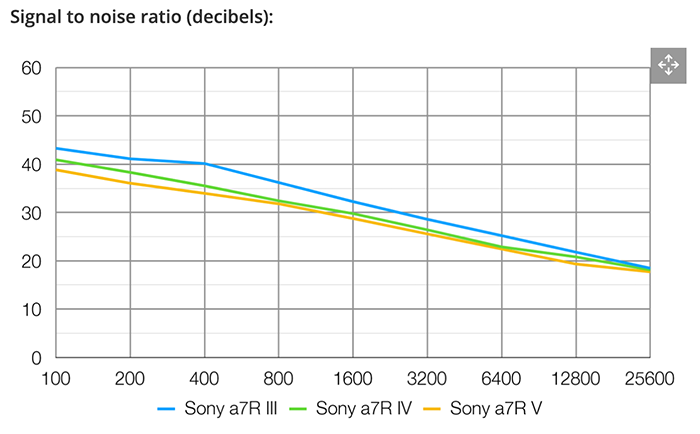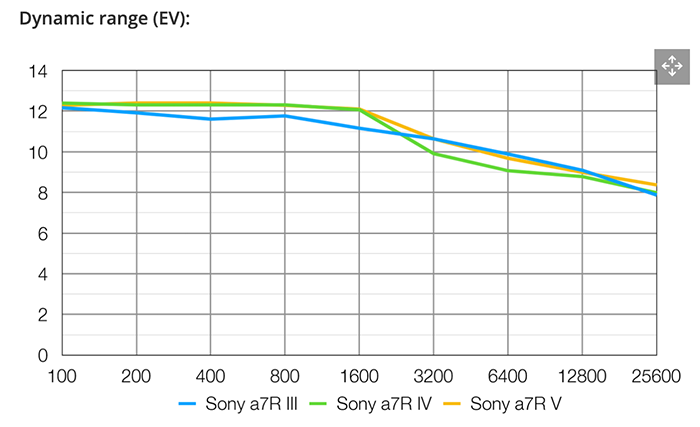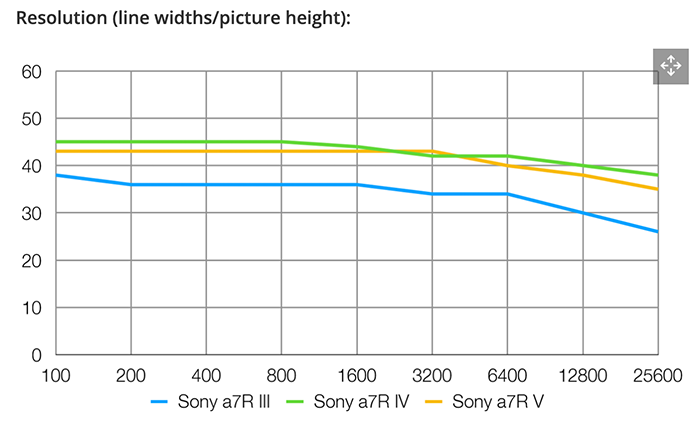Site Supporter
- Followers
- 21
- Following
- 1
- Joined
- Oct 22, 2021
- Posts
- 4,944
- Likes Received
- 3,821
- Name
- Tim
- Country
- United States
- City/State
- SE Michigan
From SAR.
I don't think any of these charts are earth shattering, these differences are pretty small. The point they're trying to make is that there haven't been any massive improvements. Link to original DCW article at the bottom.
SNR has much to do with pixel size. The RIII is the winner based on larger pixels. Not surprising except when the age is considered. It does seem to indicate that they haven't improved sensor and processor technology as much as we might hope.

The DR is a bit different. Looks like they have improved that to some degree, but really only between ISO 200 and 2400+/-. The RV is improved a bit over the RIV in the higher ISO range.

This is all Pixels. What's surprising is it looks like they tweaked the RV for some reason, leading to lower resolution (very minor) across most of the scale. Maybe this was to improve something in another area, since most of this stuff requires a trade-off of some kind.

SAR link:
 www.sonyalpharumors.com
www.sonyalpharumors.com
DCW Link:

 www.digitalcameraworld.com
www.digitalcameraworld.com
I don't think any of these charts are earth shattering, these differences are pretty small. The point they're trying to make is that there haven't been any massive improvements. Link to original DCW article at the bottom.
Evidently improvements in sensor tech – at least in terms of core stills image quality – have been slowing in recent years. Instead, we now see the likes of Sony marketing other features, like the speed of a sensor’s readout, and its corresponding impact on burst shooting speed and video capture performance.
SNR has much to do with pixel size. The RIII is the winner based on larger pixels. Not surprising except when the age is considered. It does seem to indicate that they haven't improved sensor and processor technology as much as we might hope.

The DR is a bit different. Looks like they have improved that to some degree, but really only between ISO 200 and 2400+/-. The RV is improved a bit over the RIV in the higher ISO range.

This is all Pixels. What's surprising is it looks like they tweaked the RV for some reason, leading to lower resolution (very minor) across most of the scale. Maybe this was to improve something in another area, since most of this stuff requires a trade-off of some kind.

SAR link:
Digitalcameraworld: New cameras are not getting any better! – sonyalpharumors
 www.sonyalpharumors.com
www.sonyalpharumors.com
DCW Link:

It's official: new cameras are not getting any better
Camera image quality has been stagnant for years, and we can prove it
